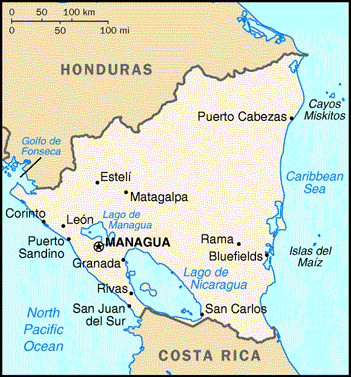

Status Quo Side: Costa Rica
Non-Status Quo Side: Nicaragua
Region: Western Hemisphere
Conflict Type: Interstate
Issues in Dispute: Governance
An attempt to prevent the installation of the President-elect of Costa Rica (CR) by a faction supported by Nicaraguan planes and officers, was put down by socialist Jose Figueres who became President. The faction's leader, T. Picado Michalski, was close to Nicaraguan temporary President Luis Somoza Debayle despite alleged communist support. During Figueres' brief tenure a rebel incursion from Nicaragua brought OAS involvement.
With Figueres again President, relations with Nicaraguan President Anastasio Somoza Garcia were strained, each country charging the other with assassination plots. On January 9 1955 Figueres accused Somoza in the OAS of permitting "adventurers" to train openly in Nicaragua.
A small airborne force of CR rebels commanded by Picado's son landed and seized the northern border town of Villa Quesada in Costa Rica. Despite denials, President Figueres charged Nicaraguan aggression and asked for OAS military aid. The town was recaptured by CR forces on January 12 after "strafing" by enemy aircraft. After an exchange of epithets, Somoza challenged Figueres to a duel on the border. Following an OAS recommendation of assistance, the US on January 16 sold fighter planes to Costa Rica.
The OAS stationed observers on the borders and created a frontier buffer zone. On January 25 300 CR rebels crossed back into Nicaragua and were interned. Both countries asked the OAS to establish a peace commisssion to settle further disputes after then-US Vice-President Richard Nixon was engaged in conciliation.
Agreement was reached on a 5-nation conciliation commission with free access to both countries to check the passage of armed terrorists.
In the early 1980's Costa Rica, burdened with hundreds of thousands of exiles from other Central American countries, charged anti-Sandinista Nicaraguan refugees with plotting to overthrow its government. Border incidents increased tensions until CR President Oscar Arias negotiated the Contadora regional peace plan for which he was awarded the Nobel Peace Prize. In 1987 the Nicaraguan Sandinista government [see NIC] negotiated with the "contra" rebels for a cease-fire; it was subsequently voted out of office in UN-monitored elections.